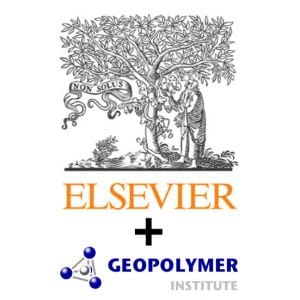 The first issue of the Virtual Journal on Geopolymer Science was put on line on June 29, 2015, hosted by the platform MaterialsToday from Elsevier. The Virtual Journal on Geopolymer Science aims at facilitating third-party research on geopolymer science. Elsevier and the Geopolymer Institute have agreed to join forces, distill and distribute the best research publications contained in their combined archives, through a series of Elsevier-Geopolymer Institute Virtual Special Issues on Geopolymer Science. Elsevier is the world’s largest academic publisher and has an archive of over nine million articles on ScienceDirect. They publish a number of leading materials science, chemical engineering, minerals processing, environmental science, engineering and technology, construction materials journals. The Geopolymer Institute holds a unique archive of specific geopolymer publications, represented by conference papers, journal articles, published research reports for free download on the Geopolymer Institute website at Geopolymer technical papers, as well as patents at Geopolymer Patents.
The first issue of the Virtual Journal on Geopolymer Science was put on line on June 29, 2015, hosted by the platform MaterialsToday from Elsevier. The Virtual Journal on Geopolymer Science aims at facilitating third-party research on geopolymer science. Elsevier and the Geopolymer Institute have agreed to join forces, distill and distribute the best research publications contained in their combined archives, through a series of Elsevier-Geopolymer Institute Virtual Special Issues on Geopolymer Science. Elsevier is the world’s largest academic publisher and has an archive of over nine million articles on ScienceDirect. They publish a number of leading materials science, chemical engineering, minerals processing, environmental science, engineering and technology, construction materials journals. The Geopolymer Institute holds a unique archive of specific geopolymer publications, represented by conference papers, journal articles, published research reports for free download on the Geopolymer Institute website at Geopolymer technical papers, as well as patents at Geopolymer Patents.
The Virtual Journal on Geopolymer Science is a collection of already published research papers, curated by us, all relating to geopolymers. We intend to publish at least four issues per year, each issue being dedicated to a special theme . The first issue is titled Environmental implications of Geopolymers . It is dedicated to Environmental implications and Life Cycle Assessment LCA of geopolymers with, on one hand, the Benefits in terms of toxic fumes, toxic waste management, radioactive waste, etc…, and, on the other hand, the Impacts (LCA) including acidification (water), eutrophication (water), Ozone layer depletion, Human toxic potential and Global Warming Potential (CO2 emissions). The paper is split into two sub-themes, namely:- Environmental implications of geopolymer resins/binders; – Environmental implications of geopolymer cements/concretes. The author questions the validity of the data used on the carbon footprint of major ingredients such as sodium silicate, published in several critical scientific papers on geopolymer cements/concretes.


